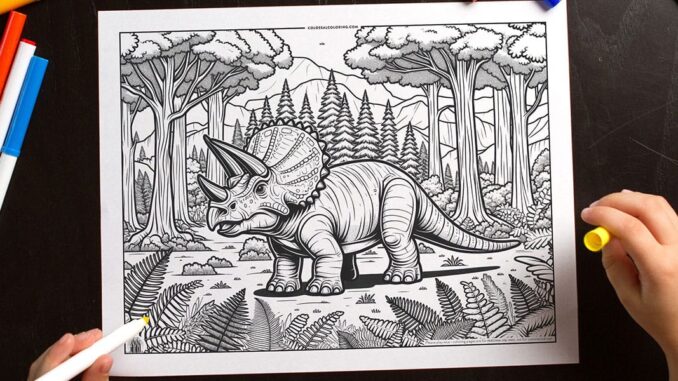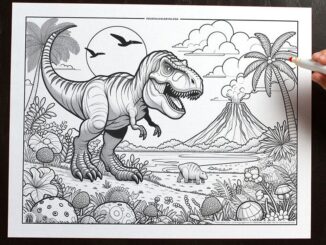
Hey there, young explorers! Are you ready to travel back in time to the age of the dinosaurs? Today, we’re going to learn about one of the most fascinating creatures that ever walked the Earth – the Triceratops! With its three horns and massive size, the Triceratops is a dinosaur that has captured the imagination of people all around the world. Let’s embark on an exciting journey to discover more about this incredible dinosaur.
What is a Triceratops?
The Triceratops, which means “three-horned face,” was a giant herbivore (plant-eating dinosaur) that lived about 68 to 66 million years ago during the late Cretaceous period. This amazing dinosaur is known for its three distinct horns – two above its eyes and one on its nose – and a large bony frill at the back of its head. But did you know that Triceratops could grow up to 30 feet long and weigh more than 12,000 pounds? That’s as heavy as two elephants!
Appearance and Behavior
Imagine seeing a Triceratops in real life! They had strong, sturdy legs and walked on all fours. Their skin was likely rough, with a pattern of scales. The most exciting feature was their large frill, which might have been used for protection, to regulate body temperature, or even to attract other Triceratops. Scientists believe that Triceratops lived in herds, just like elephants today, and used their horns to defend themselves against predators like the fearsome Tyrannosaurus rex.
Triceratops in the Ecosystem
The Triceratops played an important role in its ecosystem. As a herbivore, it fed on plants, helping to keep the vegetation in check. Its large size meant that it probably didn’t have many predators, except for the largest of carnivorous dinosaurs. The existence of Triceratops tells us a lot about the environment and climate of the late Cretaceous period, showing us a world rich in diverse plant life and varied landscapes.
Fossils and Discoveries
Fossils of Triceratops have been found mainly in North America, giving us vital clues about its existence. The first Triceratops skull was discovered in 1887, and since then, numerous other fossils, including complete skeletons, have been unearthed. These fossils help scientists understand how Triceratops lived and interacted with its environment.
Conclusion: Why Study Triceratops?
Studying Triceratops helps us understand the past and imagine what life was like millions of years ago. Every fossil discovery adds a piece to the puzzle of Earth’s history, teaching us more about the evolution of life and the planet we call home. So, the next time you see a Triceratops in a museum or in a book, remember, you’re looking at a creature that tells a story of a world long gone but never forgotten in the sands of time.
Fun Fact: Did you know that Triceratops skulls were about one-third the length of their entire body? That’s a really big head for a really impressive dinosaur!





